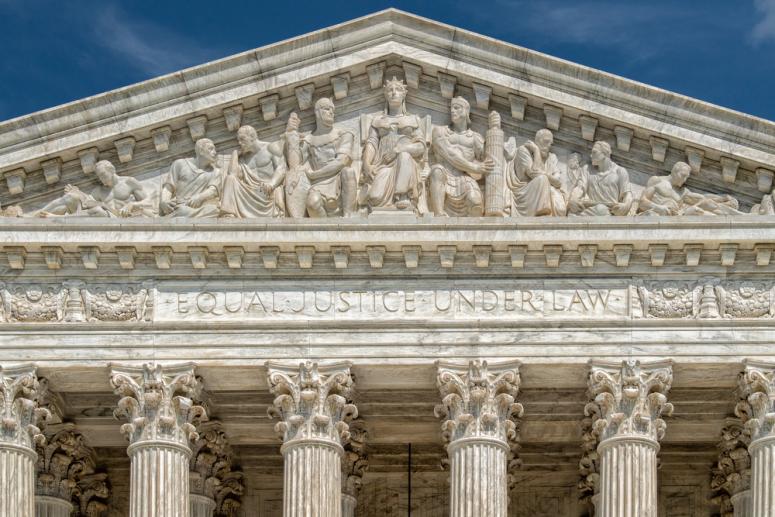
The effort to measure disparities by race and ethnicity represents a milestone in the government’s commitment to fulfillment of the nation’s landmark civil rights reforms of the 1960s. Generations of health researchers have taken up the cause of disparities research, a vital effort to understand health care accessibility and quality as well as health outcomes, particularly outcomes related to preventable causes of death and disability. It is therefore essential that the full meaning of Students for Fair Admissions be understood – not only as a decision about affirmative action in education but one that carries enormous implications for future research aimed at identifying and remedying racial and ethnic disparities in health and health care.
In setting aside the admissions systems used by Harvard and the University of North Carolina, the Court made two key points. First, it essentially reversed its longstanding holding that educational diversity represents a compelling interest that justifies the intentional use of racial classifications to confer an educational benefit. Second, the Court concluded that the defendants’ racial classification system, which reflected federally defined categories, was so flawed that it bore insufficient relationship to the accomplishment of diversity as a goal. The Court noted the “imprecise” nature of many of the categories as well as the “arbitrary or undefined” quality of other categories, calling out both the Asian and Hispanic classifications on this ground. The majority concluded that these “opaque racial categories . . . undermine rather than promote” the goal of diversity because of their insufficiency as a basis for making meaningful racial distinctions.
But the decision must be read in full, including the concurrences. Most notable in this regard is are two solo concurrences, one written by Justice Gorsuch, and the other, by Justice Thomas. The Gorsuch concurrence had a far more radical goal -- not simply to curtail the use of racial classifications in higher education admissions practices but to, wholesale, narrow the reach of civil rights laws. His specific focus was on Title VI of the 1964 Civil Rights Act, which applies to all institutions, public or private, that accept federal funding. Since its enactment, Title VI has been understood as barring both intentional and de facto discrimination, that is, seemingly neutral practices and policies that nonetheless produce a discriminatory impact. Basing his interpretation on his particular reading of the law’s literal words that failed to put the words in context, Justice Gorsuch argued that Title VI reaches only actions that intentionally deny benefits on the basis of race and does not speak to major disparities traceable to seemingly neutral practices or policies – a hallmark of civil rights law and practice for six decades. To justify his position, Justice Gorsuch argued the irrationality of racial classification measurement. He dismissed the government’s longstanding racial classification system as the work of “Bureaucrats” that lacked any expert basis and that according to regulators themselves, “should not be interpreted as being scientific or anthropological in nature,” lacked scientific rigor, and therefore was completely unreliable. For him, the government’s classifications amounted to meaningless system for “sort[ing] out winners and losers” that rests on “incoherent stereotypes” and “sweeps” people into irrational “pile[s]”. “[I]f anything,” he wrote, “attempts to divide us all up into a handful of groups have become only more incoherent with time.” In short, the Gorsuch concurrence amounts to an attempt to reduce the government’s efforts to capture racial classifications to junk science.
Justice Thomas launched what, if anything, amounted to an even more vitriolic attack. In a concurrence widely observed as an unprecedented attack on a colleague, Justice Thomas accused Justice Jackson, who wrote movingly about disparities in her dissent, of engaging in a dishonest effort to give underrepresented minority students a leg up: “Justice Jackson uses her broad observations about statistical relationships between race and select measures of health, wealth, and well-being to label all blacks as victims.” With this pronouncement, he effectively reduced disparities research and documentation to statistical tricks.
What do these views about racial disparities measurement mean? The majority opinion creates grave uncertainty about the validity of the government system of racial distinctions more generally, something that carries implications not only for efforts to use government data as the basis for remedies for aimed at reducing discrimination. Justice Gorsuch’s concurrence goes much further, arguing that the entire concept of de facto discrimination has no basis in law and, in any event, relies on the use of data that utterly lack integrity. Still more searing is Justice Thomas’s claim that disparities research is simply an effort to play the victim.
The task ahead is not simply to find a path forward in order to preserve educational diversity. It is also to reaffirm the importance of the government’s racial classification system and to identify how the system can be further strengthened. The future of civil rights law depends on it.
Editor’s note: AcademyHealth is hosting a webinar featuring a panel of experts who will explore the impact of the recent Supreme Court ruling on considering race in admissions on the field of health services research. Happening Monday, July 31 from 12-1pm ET. Register here.